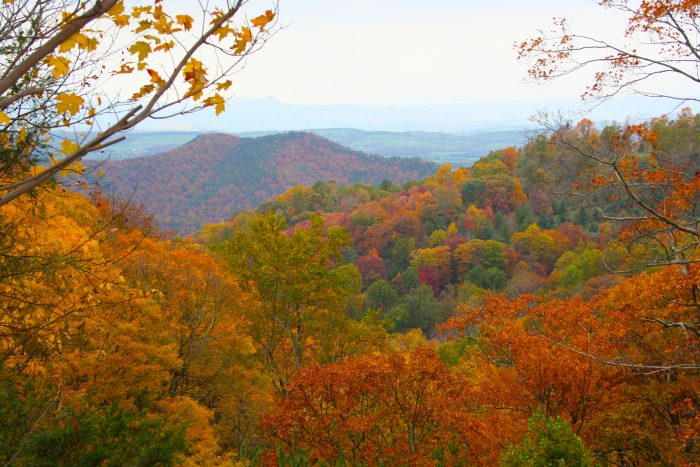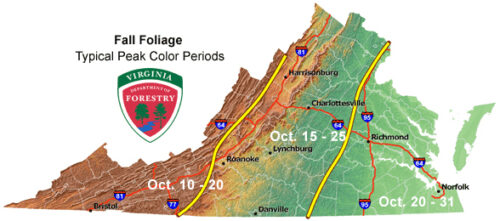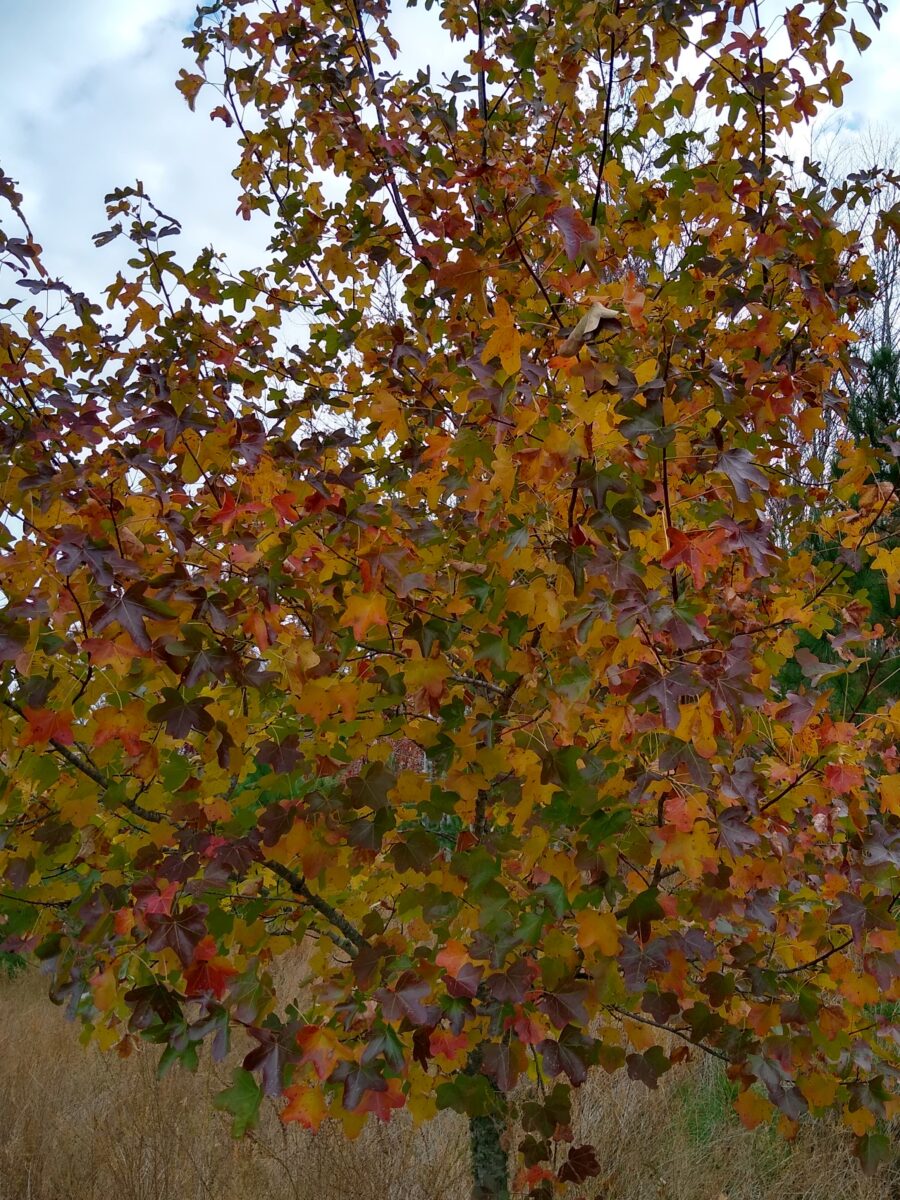
Virginia is diverse in landscape, from the highest mountains to the Eastern Shore. The variety in landscape and elevation provides a long fall foliage season, starting earliest in the higher elevations and moving eastward. Fall colors generally peak sometime between October 10 and October 31; however, these dates can vary from year to year, based on factors such as temperature and rainfall.
Virginia’s many species of deciduous trees create an interesting mix of autumn colors. Here are some colors you can expect from some of our most common species:

General timing of fall foliage season, in years of typical rainfall and temperatures
| Tree | Color | Timing |
| Black Gum | Bright red | Early |
| Dogwood | Red to maroon | Early |
| Tulip-poplar | Yellow | Early |
| Red Maple | Orange to brilliant scarlet | Middle |
| Sugar Maple | Bright orange | Middle |
| Beech | Yellow to orange | Middle |
| Hickory | Gold | Middle |
| Oaks | Deep red, amber, russet | Late |
Weekly Fall Foliage Report
November 9, 2023
This is our last fall foliage report of 2023. Now is the time to appreciate the juxtaposition of evergreen pines with late-clinging foliage and bare branches in the mountains of Virginia. This week, the Piedmont lost a lot of leaves to windy weather, but many trees still display the subdued warmth of amber and brown, a prelude to the grays of winter. The Coastal Plain is the place to see more vibrant red, orange, and gold, with many oaks still green east of Richmond.
Late fall is still a season of color and texture, even without leaves. Take time to notice the stark white trunks of sycamores against a vivid blue sky; the spidery yellow flowers of witch hazel; the pale blue, berry-like cones ornamenting redcedar’s dark green needles; the fluffy white masses of blooming saltbush along eastern roadways.
Enjoy these November photos, and please look for the next fall foliage update in September of 2024!
- Witch hazel – what else blooms in November?
- Sweetgum shows its multiple colors

Richmond Battlefields National Park
Fall Foliage Resources
- Fall Foliage Report – (800)424-LOVE (begins mid-late September each year)
- Blue Ridge Parkway – (828)298-0398 (press “3”)
- George Washington and Jefferson National Forest
- Explore Fall
- Smoky Mountains Fall Foliage Prediction Map
- All things Fall In Virginia from the Virginia Tourism Corporation
- Find a state forest to view fall color
- Prince William Forest Park is an oasis of natural beauty and human history located just south of Washington, DC.
Fall Foliage Driving Tours
Try our DOF-recommended Fall Foliage Driving Tours.
Why Leaves Change Color
- Chlorophyll gives leaves their familiar green color.
- Carotenoids produce yellow, orange, and brown colors.
- Anthocyanins produce red and purple colors and are the same pigments that give color to fruits like blueberries and cherries.
Both chlorophyll and carotenoids are present in the leaf cells throughout the growing season. During this time, chlorophyll is produced and leaves appear green. As days get shorter, chlorophyll production slows and eventually stops. With the green color no longer visible, the yellow carotenoids are revealed. During autumn, bright light and excess plant sugars produce red anthocyanins within leaf cells.
Additional Resources
| Image | Title | ID | Description | Content Type | View | hf:tax:document-category | hf:tax:Media |
|---|---|---|---|---|---|---|---|
 | Forest Facts: Virginia in the Fall | F00009 | Forest facts information sheet provides an illustrated explanation of the science of leaves changing colors, the role of pigments, effects of the calendar and weather, why these changes occur, and fall leaf identification information. Target audience: Youth – elementary age. Printed copies available. | Publication | View | education public-information | publication |
Contact Us
For more information or questions, e-mail us or use our contact form.


